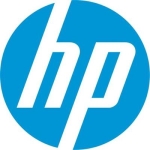We utilize Microsoft Defender for Endpoint as our EDR solution, which stands for endpoint detection and response. Through this solution, devices are integrated. If new vulnerabilities or novel attacks emerge, Defender for Endpoint promptly identifies them. It serves as our primary EDR solution amidst the variety available in the market.
The current surge in Defender for Endpoint's popularity is attributed to its real-time detection capabilities. Additionally, we can execute SOAR actions, namely security orchestration response. For instance, if we need to isolate a device from the network or run an antivirus scan on a machine, Defender for Endpoint facilitates these tasks.
Consider a scenario where one of the devices becomes compromised. During the investigation, if a malicious IP address is identified, it can be blocked using Defender for Endpoint.
Microsoft Defender for Endpoint offers excellent visibility. We can observe all the details regarding the attack process, such as the type of activity that occurred, including the entire MITRE ATT&CK framework. This enables us to view the initial actions, the device involved, the IP address used, and the extent of the impact on users and devices all through a single interface.
Microsoft Defender for Endpoint definitely assists us in prioritizing threats throughout our enterprise. Based on the signatures, the alert categories are related to high severity, medium severity, and low severity. Therefore, we can determine which alerts require our focus and prioritize them accordingly.
I am currently the Subject Matter Expert for Microsoft within my organization. This encompasses the entire Microsoft security suite. I specialized in working with Microsoft Sentinel. In the past, I was a part of the Microsoft Sentinel team itself, back in 2017 when Sentinel was in its pilot version, known as Azure Security Insights.
It's very easy to integrate the Microsoft solutions. We have data connectors and APIs readily available. There are no difficulties. If we teach an unfamiliar person for a week how to use Defender for Endpoint and Microsoft Sentinel, they can likely gain insight into the basics of integrating Defender for Endpoint, Microsoft Sentinel, Defender for Identity, or Defender for Cloud Apps.
These solutions work natively together to deliver coordinated detection responses across our environment. When an incident is detected in Microsoft Defender for Endpoint, the same incident will be captured in Microsoft Sentinel within a few minutes. The integration capabilities with both Microsoft and third-party solutions are valuable.
The comprehensiveness of threat protection provided by these Microsoft security solutions is combined into a single interface. We can access all necessary features from one place. The combined solutions offer us User and Entity Behavior Analytics, Endpoint Detection and Response, on-premises, and cloud application security. While no single product can handle everything independently, by implementing basic security practices across all Microsoft products, we achieve a comprehensive threat detection system.
The bi-directional sync capability is a feature that allows us to enable safe devices in both Defender for Cloud and Defender for Endpoint.
Sentinel allows us to ingest data from across our entire ecosystem. If we are utilizing third-party firewalls or other products, we can employ APIs to integrate those solutions with Sentinel.
Sentinel allows us to examine threats and respond comprehensively from a single location. Within this location, we can utilize SOAR playbooks to accomplish different tasks, such as blocking all compromised email sign-in sessions with just one click.
Sentinel is a comprehensive security product, owing to its integrated SOAR, UEBA, and threat intelligence capabilities. UEBA employs built-in machine learning to identify users with high, medium, and low-risk profiles. The user interface also includes a feature that enables us to log out of the user. Threat intelligence has the ability to assimilate all access information from third-party solutions and identify threats originating from the internet. Sentinel consistently operates proactively to prevent compromises.
I used to utilize Splunk back in 2015, but I have recently transitioned into being a Microsoft security advocate due to the cost optimization benefits. Microsoft Sentinel's pricing is based on the data we ingest. We have the flexibility to choose different models, such as the pay-as-you-go model or the bandwidth model. For instance, if we ingest 500 GB of EPS, we will incur charges for that usage; however, a 20 percent discount is applicable in this scenario. The pricing is directly linked to the amount of data we ingest, which is advantageous. I prefer not to ingest certain security events that are intended for operational purposes. By excluding these events, I can effectively reduce the overall cost of using Microsoft Sentinel. Additionally, being a cloud-native tool eliminates the need for any physical hardware. With just one click, the entire installation process is completed.
There are three ways Microsoft Defender for Endpoint has benefited our organization. The primary advantage is the optimization of our organization's scanning process. We have established a bi-weekly scanning process that runs at midnight, encompassing all machines. This stands as the foremost enhancement. The second advantage revolves around obtaining visibility into vulnerabilities within our environment. Considering our role as an MSSP, responsible for managing over 25 clients, this visibility holds paramount importance. Within Defender, a particularly noteworthy feature is the enabled management. This provides us with the latest information regarding vulnerabilities within Microsoft products as well as third-party software. The third and final advantage pertains to responding to emerging threats. For instance, in the case of a new attack, such as the recent CVE 3688, which targets a Microsoft Office vulnerability, including a zero-day exploit lacking an available solution, our Microsoft-oriented threat intelligence block comes into play. Through custom query languages deployed within Defender, we have the capability to identify anomalous activities. Additionally, this third point ties in with the Application Guard rules. These rules have proven instrumental in proactively preventing ransomware attacks. They operate by automatically obstructing any suspicious processes occurring within the Office environment.
Defender for Endpoint assists in automating routine tasks and identifying high-value alerts. We have APIs established, allowing us to develop our own dashboards using the Defender for Endpoint APIs. For instance, we can utilize Power BI to generate a security report, providing a comprehensive overview of the organization's internal activities.
It has eliminated the necessity for multiple dashboards. This pertains to the MXDR dashboard, which stands for Microsoft Extended Detection Dashboard, as well as the Detection Response Dashboard. Essentially, we have consolidated these into a single comprehensive dashboard, developed entirely by Microsoft. This unified dashboard streamlines the process of accessing organizational insights. As a result, there's no longer a need to access different security products to view their respective dashboards. Within Defender for Endpoint itself, we offer an array of security reports, all conveniently accessible with just one click. For those who may not find the reports relevant, we also provide the option to utilize our in-house developers for Power BI integration. This entails having a centralized dashboard where data from all products is collected and displayed in one location, facilitating a holistic view of security reports.
The integration into a single dashboard has simplified our security operations. Previously, our team had to perform numerous manual tasks for all customers. Therefore, with automation, when we present the report to the customers, they are quite impressed with having everything in one place.
Microsoft Defender for Endpoints' threat intelligence assists us in preparing for potential threats before they materialize, enabling us to take proactive measures. We identify these proactive threats due to the presence of a threat entry system. If any IOCs are obtained, they are undoubtedly identified by Microsoft Sentinel. Moreover, we have set up indicators ingestion for Defender for Endpoint. This process involves creating steps to acquire data from third-party sources and directly inputting it into Defender for Endpoint. Since Defender for Endpoint has a capacity limit of 15,000 indicators of compromise, we can only ingest data up to this extent. Any surplus data will be automatically removed, provided their IOC scores fall below 60 within a month. Consequently, new IOCs will replace the removed ones.
It has saved our organization around 30 percent of our time in terms of not having to worry about malware. When any malware does get in, it is automatically remediated. Now, the main portion of our time is dedicated to conducting in-depth investigations and identifying other occurrences.
We have cut our organization's costs in half compared to our previous solutions. This is mainly due to the automation of most tasks, which means we now only need ten people to manage 20 customers, a significant reduction from the 30 engineers we needed before.
Microsoft Defender for Endpoint has significantly reduced our time for detection and response. Our Service Level Agreement entails detecting issues within 15 minutes and responding within 30 minutes. Defender for Endpoint has greatly contributed to these time savings. The incidents that we used to address using Splunk required extensive coordination within our team and with our customers, leading to substantial time consumption. Previously, resolving a single incident took around 40 minutes. Presently, this process takes approximately 15 minutes.
The most valuable feature is the timeline, which allows us to view the details of an event 30 minutes before and after.
Forensic investigation is a valuable feature of Defender for Endpoint.
We can run the virus scan across our entire environment.
We can block suspicious URLs and quarantine malicious files within the Defender for Endpoint portal.
Some of the integrations that Defender should include involve the use of the web app. Utilizing the web app implies that the Defender API should be accessible through mobile devices as well. For instance, if there exists a mobile application, it would be beneficial. Let's imagine a scenario where I'm traveling and I receive a new alert. With a Defender mobile application, I could easily isolate the threat, conduct an investigation on my mobile device, or even automatically escalate or assign the alert to my engineers.
There are certain third-party apps that haven't been integrated with Defender. I would be delighted to witness the integration of those apps with Defender for Endpoint.
The deployment of Defender for Endpoint should be made smoother via Intune.
With the proper training, the initial setup is straightforward.
When conducting customer onboarding, the deployment will require a minimum of three days. Therefore, we must ensure everything is executed flawlessly and follow security best practices. Emphasizing precise deployment is crucial. Hence, deploying without careful planning is not an option, aiming to prevent any issues in a larger environment. In contrast, a smaller environment can be deployed within two days.
For a large organization with over 5,000 employees, a team of up to six people is required for the deployment.
I rate Microsoft Defender for Endpoint an eight out of ten.
We also utilize Defender for Cloud. Defender for Cloud is employed specifically for the Azure product. If we have servers deployed within Azure, the system handles alerting, traceability, and security. Therefore, we certainly use it.
We have three locations where Microsoft Defender for Endpoint is deployed. One is in Australia, another is in Qatar, and the third is in India. Consequently, we employ approximately two hundred personnel.
No maintenance is required for Defender for Endpoint on the customer's end.
A single-vendor security solution approach is better than a best-of-breed strategy. We all are using Microsoft laptops and OS.
I recommend completing a POC before adapting Microsoft Defender for Endpoint.














